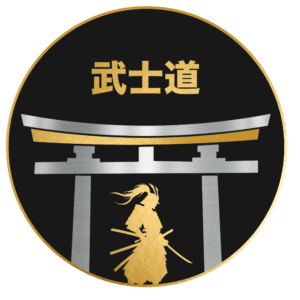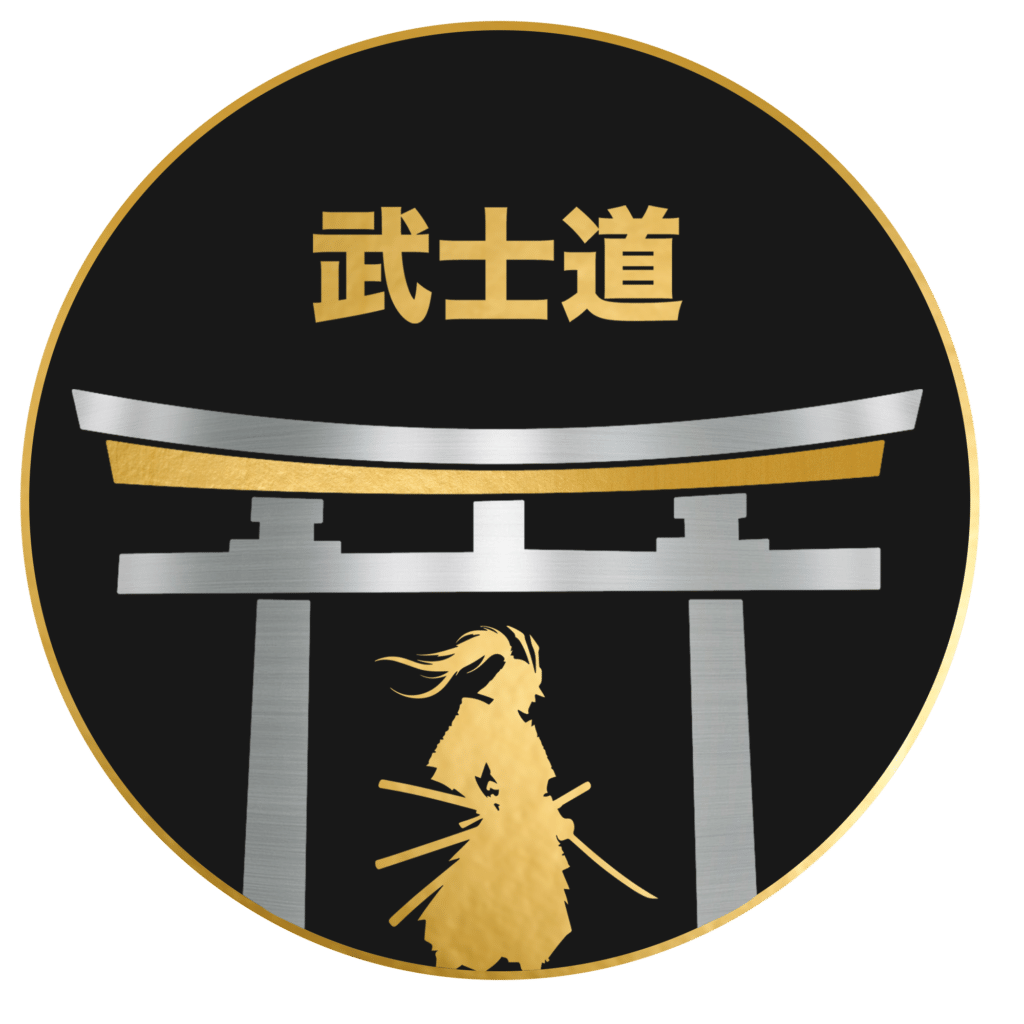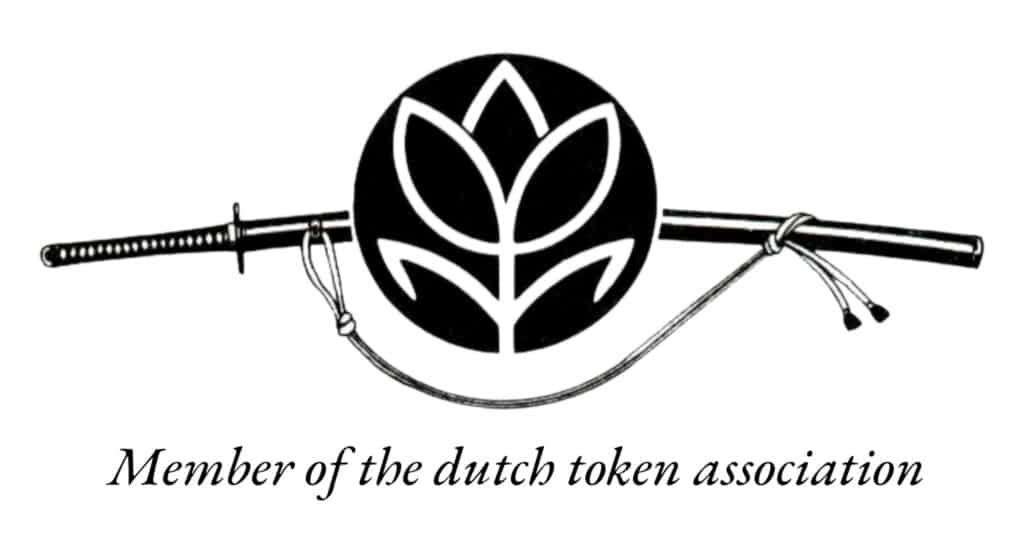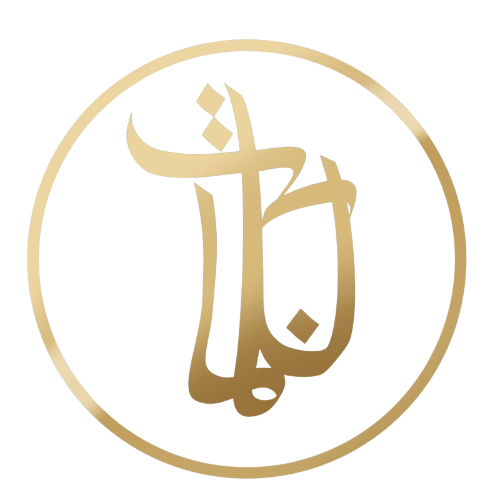learn some new terms in japanese
Find Here Their Meaning
Abumi: Stirrups.
Abumi zuri no kawa: Leather patch on the inside of tosei suneate to prevent chafing of the stirrup leathers.
Agemaki: Bow of silk cord hung from rings on amour.
Agemaki no kan: Ring to fix the agemaki.
Ago no o benri: Protruding studs on chin of menpō to prevent the helmet cords from slipping forward.
Akoda nari bachi: Literally “Gourd shaped bowl”. Style of helmet that developed during the Muromachi period (1333-1573) which is distinctly swollen at the back.
Ase nagashi no ana: Hole for sweat drainage (on mengu)
Arare boshi bachi: Helmet bowl made or decorated with large rivets.
Bachi: Helmet’s bowl.
Bishamon gote: Armoured sleeves having an integral small sode covering the upper arm.
Bitsu: Armour’s storage box
Boko no ita: (also see oshitsuke no ita) Top plate at the back of a tosei do to which the watagami are riveted.
Byakudan nuri: Transparent lacquer of a golden yellow color.
Byo toji yokohagi okegawa dō: Tosei dō of horizontal plates fastened by visible rivets.
Chōgane: Hinge.
Dai shinodare: Ornamental plate covering part of the helmet, decorated in shinodre.
Daienzan bachi: Hemispherical helmet bowl.
Daimyō: Holders of considerable area of land – formalized during the Edo period to those with incomes above 10,000 koku per year.
Daimyō gyōretsu: Procession for entering Edo during the sankin kōtai
Daishō: A pair of swords having matching mounts (a long one and a short one).
Dangae dō: Dō in which different styles of lacing are used.
Datemono: Generic term for helmet crests.
Dō: Cuirass.
Dō-maru: A hon-kozane cuirass which wrapped around the body and tied closed under the right arm.
Ebira: Open quiver.
Eboshi nari kabuto: Helmet shaped to resemble a court hat.
Egawa: Leather decorated with pictorial designs.
Etchu-bō: Menpō of Iwai school, favorite of Etchu no kami Tadaoki (1546-1645)
Fukigaeshi: The turn backs at the front edge of the upper row or rows of a neck guard. Often bringing a family crest.
Fukurin: Applied metal rim.
Futatsuki no hyō: Gourd-shaped protection that can be opened to store herbs.
Gessan: See kusazuri
Gessan jikoro: Shikoro having all but the uppermost plate divided into sections.
Gin nagashi: Decoration with irregular drops of a silver-looking alloy (sawari).
Go-mai dō: A five-sectional armour.
Goishi gashira: Iyozane scales with heads of a rounded shape.
Goshozan: High-sided helmet having the back higher than the front.
Gumi-wa: Leather loop fitted with an elongated metal bead on the shoulder strap of an armour to which the shoulder guards are tied.
Gunbai uchiwa: War fan used to give orders to troops on the battlefield.
Gunsen: Folding war fan.
Gusoku: “Modern” armour, used since 16th century.
Gyōyō: Small leaf-shaped plate used to guard the fastenings of the shoulder straps.
Hachi: The bowl of a helmet.
Haidate: Defence for the thighs.
Hakama: Wide pants.
Hanagami bukuro: Pouch attached to the front of a dō or behind one of the gessan.
Hanbō: Literally “half cheek”; a mengu made without a nose.
Happuri: A head protector that guards the forehead and cheeks.
Haraidate: Tubular maedate holder.
Haramaki: Armour worn during the Heian and Kamakura periods which wrapped around the body and fastened under the right arm. From the Muromachi period, the term refers to an armour opening down the centre line at the back.
Harikake: A light decorative superstructure of wood, paper, leather and lacquer.
Hatomune dō: Dō having a medial ridge.
Heichozan: High-sided helmet shape which is flat on top.
Hibiki no ana: Name of the four holes on some multi-plate helmets below the shiten-no-byō. Holes in a helmet bowl originally for attaching a helmet cord but later decorative.
Hineno jikoro: Close-fitting neck guard having a lower edge which is shaped to the shoulders.
Hineno zunari bachi: Helmet bowl of simplified construction having a central longitudinal plate which is overlaid by a brow plate/peak combination.
Hishinui: Cross-laces.
Hishinui no ita: Bottom-most plate of a series. So named because it is often ornamented by a double row of cross-laces.
Hishi toji: A cross-knot other than on the hishinui no ita.
Hishinui toji dō: A variety of yokohagi okegawa doi in which the plates are connected by cross-knots.
Hitai ate: (also Hitaigane ) A metal plate that protects the forehead; usually attached to a head-cloth. Late form of happuri worn in place of a helmet.
Hoate: A mask covering the chin and cheeks only. See hanbō.
Hodo haidate: Haidate having the lower part of the armoured portion divided into pendant sections.
Hon kozane: True scales.
Hon zogan: Inlay.
Horagai: Conch shell war trumpet
Hoshi: A rivet.
Hoshi bachi: A helmet bowl with prominent rivets.
Hotoke dō: A smooth faced dō.
Hyotan gane: Gourd-shaped plate forming part of a kote.
Ichimanju jikoro: Neck guard having only the top plate curve.
Ichimai uchidashi: An element embossed from a single iron sheet
Igaki: Ornamental plates around the base of a helmet bowl.
Ikada: Small rectangular plates set in mail.
Ikada haidate: Mail haidate with scattered ikada.
Inome: Decorative element shaped as a reversed heart.
Iro iro odoshi: Multi-colored lacing.
Ishime: Irregular rough texture like the surface of stone.
Ita haidate: Scale haidate.
Ito: Ribbon used to lace the armour’s parts.
Iyo-zane: Type of scale assembled with almost no overlap.
Jinbaori: Surcoat worn over armour.
Jingasa: Conical open hat or iron or lacquered leather worn as light defence.
Jūō-gashira: Knee protector
Kabuto: A helmet.
Kabuto no o: The tying cord of a helmet.
Kae-mon: Secondary family crest.
Kaihan suneate: Suneate without knee guards.
Kamon: Family crest.
Kan: Ring.
Kara boshi: Large rivet having a hollow head.
Kara bitsu: Chest used for storing armour.
Kasa jikoro: Wide spreading shikoro, umbrella-like, often almost flat.
Kasa jirushi no kan: Ring at the back of a helmet designed to carry a small identification flag, but on later helmets usually provided with an agemaki bow.
Kashira-date: Ornament on top of the kabuto.
Kawari bachi/kabuto: Helmet of unusual construction.
Kawara haidate: Haidate of S-shaped overlapping scales.
Kawa zutsumi dō: Dō covered with leather.
Kebiki odoshi: Close lacing.
Kegutsu: Fur shoes.
Ken: Straight sword used as a decoration.
Kirigane: Applied iron ornaments.
Kikkō: Literally “tortoise-shell”, Japanese brigandine with hexagonal pattern.
Kiritsuke zane: Pseudo-scale made with lames cut and built up with lacquer to imitate hon-kozane construction.
Ko-boshi bachi: Helmet bowl with small standing rivets.
Kogai kanamono: Decorative plate and ring combination attached to the rear edge of a shoulder guard to which a tying cord was fastened.
Kōgake: Iron feet protections.
Kohaze: Toggle.
Kohire: Winglets that protect the top of the shoulder, often made of kikko.
Koseizan: High-sided helmet, usually flat topped, which is taller than a hemisphere.
Koshimaki: Strip of metal forming the lower edge of a helmet bowl.
Kōshōzan: see gōshozan.
Ko-sode: small size sode.
Kote: Armoured sleeve protecting the arms.
Kozane: A small scale.
Kozane gashira: Top edge of an iyozane cut cut to resemble two kozane.
Kusari: Chain-mail.
Kusazuri: Pendant sections of scales attached to the lower edge of the dō to cover the groin.
Kuwagata: Flat, stylised horns used as decoration in front of a kabuto.
Kyubi no ita: Defence for left armpit, worn with ō-yoroi.
Mabizashi: Visor of a helmet.
Maedate: Crest attached to the front of a helmet.
Maki-e: Lacquer decoration, generally with gold designs.
Manchira: European gorget which was adopted by the Japanese.
Manju–wa: Short armoured waistcoat worn beneath an armour to protect the armpits and upper chest.
Mei: Signature, inscription.
Mei no ana: A slit in the lining of a helmet through which the signature can be read.
Mengu: Face armour.
Me-no-shita-men (also Menpō): Mask; face armour that protects the chin, cheeks, nose, and throat. The nose is often removable.
Mimi ito: Braid around the edges of a piece of armour.
Mogami dō: Dō of horizontal plates, each of which is articulated by separate hinges.
Momonari bachi: “Peach-shaped” helmet inspired by the European morion.
Mon: Family crest.
Munaita: Uppermost plate on the front of a dō, protecting the chest.
Nanban: Literally “Southern barbarian”; the Period Japanese adjective to refer to anything European, such as a nanban dō, or a nanban kabuto.
Nawame fukurin: Applied metal edging shaped to resemble a twisting rope.
Ni-mai-dō: Dō in two parts joined by a hinge under the the left arm.
Nio–dō: Dō modelled to represent the human torso.
Nodowa: Throat protection to wear like a necklace.
Nuinobe–dō: Sugake laced ni-mai dō made of iyozane.
Ō-boshi: Rivet having a large head.
Oda–gote: Kote having gourd-shaped plates applied to the forearm and upper arm.
Oda–haidate: Haidate of mail with ikada and plates resembling those at the elbow of oda gote.
Odayori-no-kugi: Pins under a menpō for fixing the kabuto’s laces.
Odoshi: Lacing.
Ōie-bō: A kind of mask produced by the Iwai school only for members of the bakufu.
Okegawa–dō: A two-sectional clamshell armour of riveted lame construction.
Okitenugui kabuto: A helmet bowl shaped like a cloth wrapping the head.
Oni: A demon from the Japanese tradition, often used in maedate.
Origami: Certificate of authenticity.
Ori-kugi: A hook on the cheek of a mask around which the helmet cord is fastened.
Ō-sode: Large rectangular sode.
Ō-yoroi: Classic armour of the Heian period, made for horse riding.
Ressei: A mask with fierce expression.
Ryūbu: A mask with noble expression.
Sabi nuri: A lacquered surface imitating rusty iron.
Saihai: A commander’s baton hung with a tassel of hair or paper.
Saihai-no-kan: A ring on the right breast of a tosei-dō.
Saiga bachi: A type of multiplate helmet made in Saika.
Sankin kotai: The mandatory residence in Edo for daimyō.
Sashimono: A flag or other decoration worn attached to the back of an armour.
Sei-ita: Optional back plate worn over the opening of a haramaki. Also called “coward’s plate”.
Seme-kohaze: A double-holed bead sliding on a loop of cord to close it over a toggle.
Sendai dō: See Yukinoshita-dō.
Sengoku jidai: A period of Japanese history between 1467 and 1568, when many battles took place.
Shakudo: Alloy of copper and gold, patinating to a purple-black colour.
Shibuichi: An alloy of copper and silver, patinating to a grey colour.
Shikoro: Neck guard of a helmet.
Shinobi–no–o: Helmet cord.
Shinodare: An ornamental strip emerging from the tehen kanamono and extending down the front, sides or back of a helmet bowl.
Shino-gote: Kote having splints as defence for the forearm.
Shino-haidate: Haidate armoured with splints connected by mail.
Shino-suneate: Shin guards of splints connected by mail.
Shiten–no–byo: Vestigial rivets applied as decoration to helmets.
Shizuka–no–o: Leather tie used to attach an ō-sode to the rear loop on the watagami.
Shōgun: Commander of the Japanese army since the Kamakura period (1185-1333).
Shohei–gawa: Variety of shishi ko sakura gawa incorporating the date 1352.
Sode: Shoulder guard.
Sode tsuke–no–o: Fastening cord of a shoulder guard.
Sōmen: Full-face mask.
Sugake: Lacing technique in which pairs of laces are threaded vertically up the row of scales.
Suji: Rib or flange obtained by folding a plate to make it more resistant.
Suji–bachi: Multi-plate helmet in which the rivets are countersunk leaving the flanged edges of the plates prominent.
Suneate: Shin guard.
Tabi: Light footwear.
Tanko: Early plate armour of the Yamoto period.
Tare: Throat protection attached to a menpō.
Tasuki–ni–shishi–no–maru e–gawa: Printed leather with a design of Chinese lions in a diagonal lattice of foliage.
Tatami dō: Folding dō made of iron square plates.
Tatemono: Ornaments applicable to the kabuto.
Tehen: The hole in the crown of a helmet bowl.
Tehen no kanamono: Ornamental fitting around the tehen.
Tekko: Protection for the back of the hand incorporated in almost any kote.
Tenkokuzan: High-sided helmet whose top dips in the region of the tehen.
Tenugui–no–kan: Ring on the left breast of a tosei dō.
Tominaga gote: A type of kote with an extended upper section to protect shoulders; the left and right kote can often be laced together.
Tominaga sashinuki gote: Kote attached to a short jacket with armoured collar.
Tonbo gawa: Printed leather decorated with dragonflies.
Tosei dō: “Modern” dō, that is those evolved during the sixteenth century.
Tosei gusoku: “Modern” suit of armor.
Tsunomoto: Hook for crest attachment.
Tsurubashiri: Leather sheet covering the front of an ō-yoroi which prevented the bow string from snagging on the heads of the scales.
Tsutsu gote: A kote having the plates over the forearm hinged.
Tsutsu suneate: Shin-guards of large plates hinged.
Uchidashi: Embossing technique.
Ukebari: Lining inside a kabuto.
Uketsubo: The receiving cup for the base of the sashimono pole.
Urushi: Lacquer.
Ushiro date: Crest fitted to the back of a helmet.
Uwa obi: Outer sash.
Wakibiki: Armpit guard.
Wakidate: Crests fitted to the sides of a helmet.
Wakiita: Upper side plates on a dō, generally lacquered or covered in leather.
Waraji: Straw sandals.
Watagami: Shoulder straps of an armour.
Yadome: Standing flanges on the cheeks of a mask.
Ya hazu gashira: Type of iyozane having the upper edges notched.
Yodarekake: Neck protection attached to the lower edge of almost any mengu.
Yokohagi okegawa dō: Tosei dō made from horizontal plates.
Yoroi: Armor. Old term, generally used to refer to older ones.
Yukinoshita dō: A variety of plate gomai-dō completely made in thick iron.
Za-boshi: Prominent rivet head fitted with a chrysanthemum-shaped washer.
Za-kanamono: Grommets for the armor’s holes.
Zenshozan: High-sided helmet higher in the front than the back.
Zunari bachi: “Head-shaped” helmet, made with large, flat plates.



